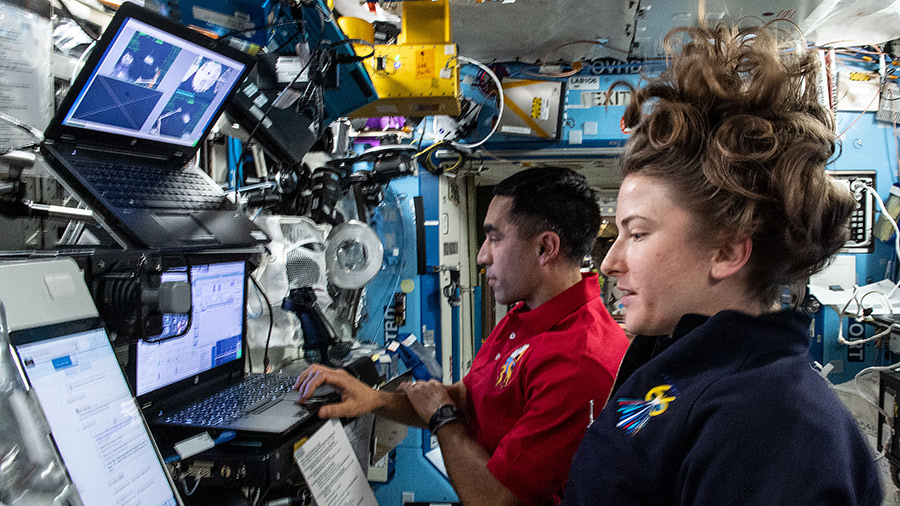
A U.S. resupply ship is poised to blast off Saturday morning on a day-and-a-half-long journey to replenish the International Space Station. While two astronauts train for its robotic capture, the rest of the Expedition 66 crew focused on maintaining science hardware and orbital lab systems.
Weather at the Wallops Flight Facility in Virginia is forecast to be 75% favorable for the launch of Northrop Grumman’s Cygnus space freighter on Saturday at 12:40 p.m. EST. NASA Flight Engineers Raja Chari and Kayla Barron will be on duty Monday morning observing Cygnus’s arrival from the seven-windowed cupola. Chari will be at the robotics workstation commanding the Canadarm2 robotic arm to capture Cygnus on Monday at 4:35 a.m. when it reaches a distance of about 10 meters from the station. Barron will be monitoring the cargo craft’s systems during its methodical approach and rendezvous.
Following the successful capture of Cygnus, ground controllers will take over the controls of the Canadarm2 and remotely maneuver the vehicle toward the Unity module. Cygnus will then be installed on Unity, where the astronauts will open the hatches shortly afterward and begin unloading over 8,300 pounds of station gear and new science experiments. NASA TV, on the agency’s app and website, will broadcast the launch live beginning Saturday at 12:15 p.m. with rendezvous and capture coverage beginning Monday at 3 a.m.
The crew’s remaining three astronauts and two cosmonauts serviced a variety of station gear, worked on space research, and unpacked a new Russian resupply ship.
NASA Flight Engineer Mark Vande Hei worked on the Kibo laboratory module’s water recovery system while NASA astronaut Thomas Marshburn replaced components inside the COLBERT treadmill. Astronaut Matthias Maurer of ESA (European Space Agency) checked out wireless gear that downloads biomedical data then moved at radiation detection hardware.
Commander Anton Shkaplerov explored plasma physics that could inform future research methods and spacecraft designs. Roscosmos Flight Engineer worked on Russian communications gear before continuing to unpack cargo from the newly arrived Progress 80 cargo craft.
